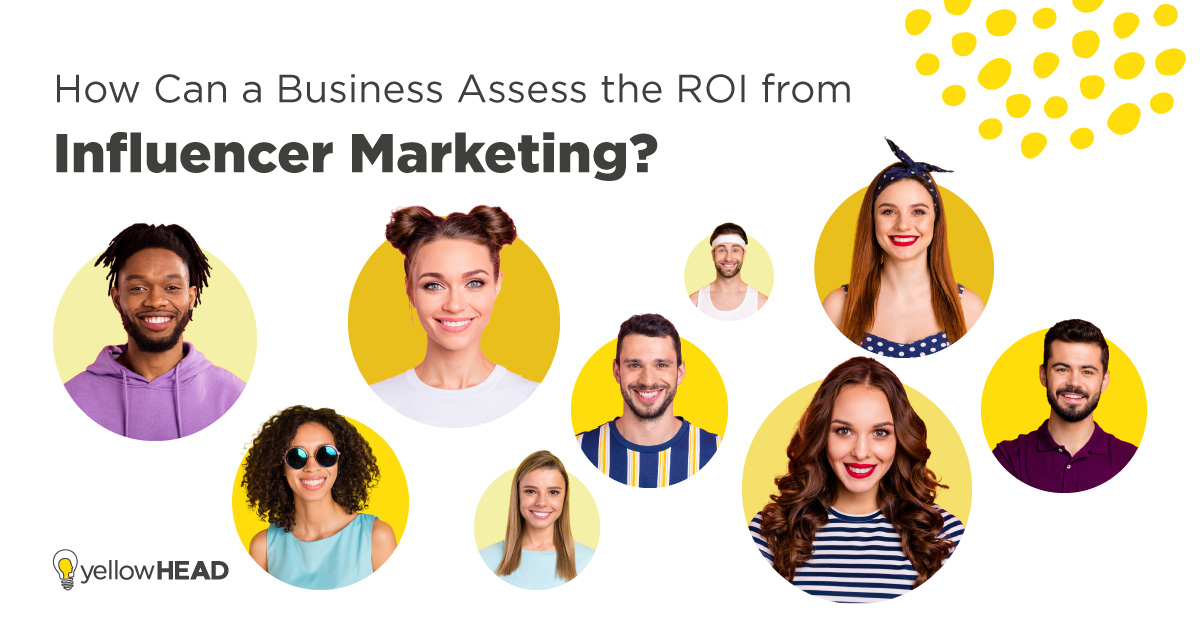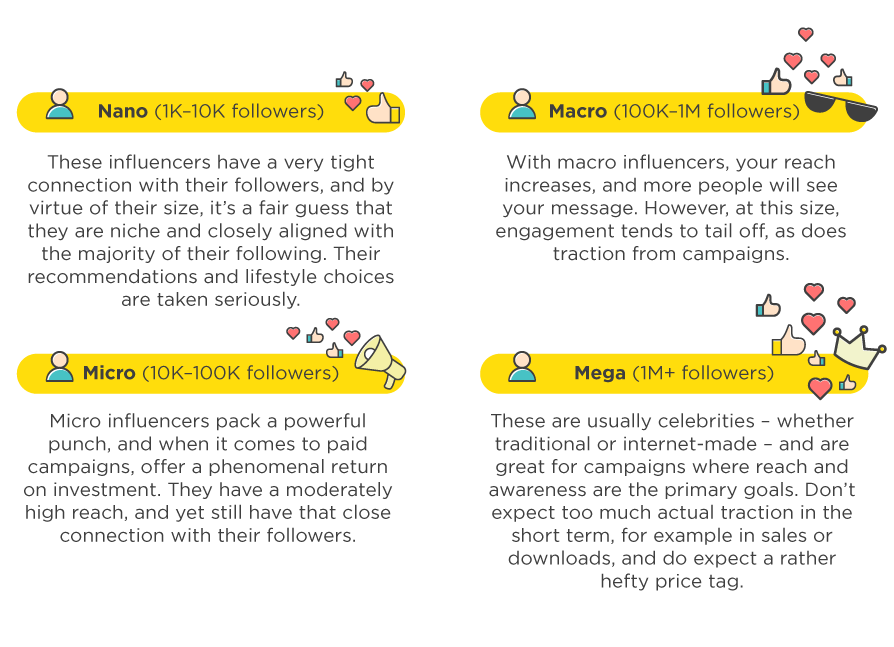How Can a Business Assess the ROI from Influencer Marketing?
The idea of “influencer marketing” was far from consideration a few years back. People never believed that influencers would play a vital part in the marketing industry, changing the marketing landscape as we know it.
With the gradual changes, and the market trends in the industry, influencer marketing has become a crucial part of business marketing today. More companies are now leveraging influencer-based marketing strategies to maximize the reach and effectiveness of their marketing strategies.
According to HBR, the influencer marketing industry’s value reached $16.4 billion in 2022. If these trends continue to grow, experts suggest that we could also see it as a key player in business marketing during 2023.
However, one of the biggest challenges with influencer marketing is understanding the effectiveness of the campaigns via ROI calculations. Influencer marketing takes time to show its results, making it harder for businesses to determine the value of their current campaigns.
Table of Contents
While most marketing tactics and approaches have KPIs, that’s not the case for influencer marketing. It is largely random as it relies greatly on public sentiment and reactions. However, there are some methods of determining the return on investment of influencer marketing campaigns you should know about.
Before we get into details about measuring the ROI of influencer marketing campaigns, let’s look at some basics and review what influencer marketing is.
What is Influencer Marketing?
Influencer marketing is the process of business marketing by using influencers for product marketing and services through their social media accounts. These influencers are typically divided into three segmentations:
Besides having greater audience engagement, the influencer marketing approach also offers other benefits.
For starters, influencer marketing instills trust and affection, which no paid ads can ever create in the audience. Influencer marketing did take a toll back in 2018 because of these influencers using fake followers or greater reach.
Moreover, ineffective ROI showed up when influencer marketing was not used to create brand loyalty or awareness and focused on direct sales. Like all marketing tactics, influencer marketing also has its pros and cons. However, it still doesn’t remove the fact that influencer marketing is one of the most viable options for business marketing.
In our yellowHEAD whitepaper about ‘The secret of Micro Influencers’ you can read more about why use micro/nano influencers instead of macro/big influencers.
How Can a Business Assess the ROI from Influencer Marketing?
While the influencer marketing approach is highly effective, it can still mean limiting the tracking capabilities. You can still determine the ROI of your campaigns, but they require some tools and techniques that most new businesses are unaware of.
Here are some of the top techniques to assess the ROI from influencer marketing effectively:
1. Add Affiliate Links
If you are having trouble tracking online sales confirmed via social media channels, affiliate marketing links are the quickest way to keep an eye on them. The influencers get a commission or cut from these sales, making tracking the numbers easier.
These affiliate links also provide other user data, such as the number of clicks on the page and the number of sales based on average order size. Although this method is not 100% accurate, it is still a good option.
However, there is a challenge to it; the cookies in these affiliate links are valid for 30 days in most cases. In case a customer purchases after this period, the company may not connect the sale to the influencer marketing campaign, increasing the chances of calculation errors.
Additionally, if the affiliate link is a little weird-looking, the customers may not click on them, fearing information compromise. Fortunately, with the inclusion of platforms like Instagram for business marketing, you can leverage the shopping post options. With these options, customers can purchase their required products directly from their Instagram account, increasing impulse purchases and customer ease.
2. Create Dedicated Product Landing Pages
Creating short links may be a good way to increase purchases, but it also increases the chances of customers not purchasing. These links are highly suspicious, and customers don’t wish to endanger their information.
There’s a chance you can reduce this problem by using branded links for the products you want to market. For instance, you can create dedicated landing pages for each product and add them to your influencer marketing campaign.
If you want the best results, we recommend removing the links completely and adding unique ones to the influencer marketing campaigns where needed. As an example, view the following link that you can use for your marketing campaigns with influencers – https://xyz.com/campaign/influencer1.
You can also ease things by assigning a dedicated landing page for every influencer campaign. There are landing page generators that you can leverage to minimize the issues involved. These landing pages have performance and traffic analytics tools for better assessment. Most analytic tools merge with Google Analytics putting the performance KPIs under a single report and assessing them as needed.
3. Integrate Urchin Tracking Modules (UTMs)
UTMs are one of the best ways for ROI tracking and implementation. They are also one of the most versatile approaches in the influencer marketing domains.
All you need to do is add structure to the links allowing analytical tools like Google Analytics to digest it when needed. The changes in the set parameters may vary based on the campaign requirements. It allows Google Analytics to present the traffic source accordingly.
However, there are certain challenges with these UTMs as well. It’s easy to remove them from a link, increasing the size of the link. Longer links have lesser credibility for new potential customers. The best way to counter these issues is to use link shorteners. These tools can hide the UTMs and show a shorter version of the link.
Many link shorteners, such as Bitly, have integrated analytical tools that can help calculate the number of clicks on web pages.
4. Focus on Brand Engagement
If your influencer marketing campaigns aren’t getting the results you want, it can be a matter of engagement. The simplest way to deal with them is to ask the influencers to guide the audience directly to your website.
Once you get this option, you can easily move the traffic to the social media reference o channels. You can use the channels when there’s no option of using links for the process.
It will also help you determine the follower rates or the engagement ratio change and its impact on the ROI. The best way to maximize this approach is by adding hashtags that the influencers can utilize in their marketing techniques.
You can identify which hashtags lead to maximum responses, making it the perfect option for everyone. You can use the hashtags prepared for specific contests for better brand recognition and conversions.
We also recommend determining the brand engagement and its success based on the number of participants in each contest. You can also check the participant retention periods by seeing how long these participants stay on these links. For instance, a campaign that lasts for a month can show particular gains from the marketing strategy.
5. Offer Unique Discount Codes
On some platforms, such as Instagram, you may not be able to add links. However, that still doesn’t mean you cannot leverage these codes and provide a dedicated discount code for audience sharing. The best way to deal with it is to review the transactions brought in by the influencers.
You can also offer a commission to these influencers in exchange for every sale or every bulk sale made. It’s a method of setting a portion or percentage of the affiliate sales for the influencers or a fixed rate for further collaborations via sponsored content.
Personalized discount codes provide a better look at ROI regardless of your business goal from influencer marketing. The best part about these discount codes is their scalability, as it lets the marketing professionals add discount codes to every post for better influencer collaboration. You can get a more detailed view of campaign elements that work and the ones that don’t show the right results.
With some A/B testing in discount codes, you can identify the full capability in place. Try to be as creative with the discount codes as possible. For instance, you can turn these codes into links, so users get discounts as soon as they click on the links. With these simple adjustments, you can make user marketing simpler and easier than ever.
Making changes to the Discounts
The value of the discount isn’t the only thing you have to check for the discount value determination. You also have to consider the constraints of the company, the users, and the timeframe available. There are two major benefits of this kind of approach:
- For starters, you can boost the overall engagement rates of the influencer campaign by improving the discounts offered. With these changes, improving brand awareness also becomes easier.
- The discount limits let the companies run their marketing campaign incentives without surpassing the set budget.
Trackable coupons are one of the best ways to get data insights for data-driven practices. However, using the right software matters because the more complicated system you set up, the more capable your software should be.
6. Monitor the Earned Media Value (EMV)
EMV refers to the exposure in media gained from influencer marketing campaigns. It can also be applied to third-party referrals and other marketing techniques. It’s easier for companies to determine the monetary value of their campaigns by determining the right EMV values.
The results from the EMV refer to the total spending amount you would invest in social media channels for equivalent social engagement. While there’s no given formula for determining the EMV, there are some factors to help you calculate. For this, you need to calculate the average cost of the following:
- Cost per engagement.
- Cost per impression.
- Cost per click.
Once you have an average amount for all these expenses, it’s easier to determine the total profit, business, conversions, and results you’ve gained from your influencer marketing campaigns.
7. Consider the Share of Voice & Mentions
Social mentions and brand watch are important KPIs in determining the effectiveness of your campaigns. With these mentions, you can determine your marketing campaign’s effectiveness. It helps you determine what and where your brand and competitors are being discussed.
The results from the share of voice of mention show that the findings are more qualitative than quantitative. However, if you wish to create a new separate brand in the industry—a share of mentions and voice can help.
Influencers also have a vital role in changing these mentions and the voice of your business. It can be a great source of information and ideal for an ROI campaign running.
You can also use influencer marketing to create sponsor ads and marketing. However, it can be a bit more complicated and controversial, so maintaining a balanced approach is important. The main question is why brands should pay marketing influencers for it.
While it is a bit more challenging, it can help with better reach and results. By utilizing this method, leveraging can help you maximize the reach of your business. By smartly incorporating these models, you can save costs on the:
- Travels
- Rental of the studio
- Make-up artists
- Camera person
With the ROI you get from these changes, it’s simpler to re-invest this money into further marketing elements.
Final Thoughts
Influencer marketing is a viable option for individuals that want to maximize their reach and conversion for better brand recognition. There’s a variety of different influencer marketing approaches you can adopt.
However, it’s all about how you wish to present your brand’s voice and mentions in the industry. It also helps build a better brand image and maximize the ROI of your campaigns. Adopting the methods we have discussed allows you to better assess your brand’s ROI and maximize the results.
Take the time to carefully deploy these strategy elements into your current influencer marketing campaigns and strategize for upcoming market changes.



